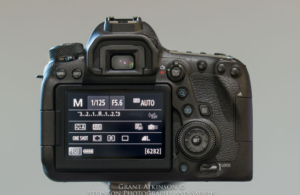Regularly Format Your Card and Avoid Removing It While the Camera is On
Learn about memory card corruption risks and how to format camera card to mitigate the chances of data loss. Understanding the importance of formatting your camera card and preventing memory card corruption is essential for safeguarding your valuable data.
Understanding Memory Card Corruption
What is Memory Card Corruption?
Memory card corruption occurs when data on the card becomes inaccessible or unreadable. This can happen due to various reasons, including physical damage, software errors, or improper handling.
Common Causes of Memory Card Corruption
- Physical Damage: Bending, dropping, or exposing the card to extreme conditions.
- Improper Ejection: Removing the card without safely ejecting it from the device.
- Virus or Malware: Infected devices can corrupt the data on the card.
- Overuse: Using the card beyond its intended capacity or lifecycle.
- Power Interruptions: Powering off the device while writing data can cause corruption.
Preventive Measures to Avoid Corruption
Using High-Quality Memory Cards
Investing in high-quality memory cards from reputable brands can reduce the risk of corruption. These cards are built with better materials and undergo rigorous testing.
Proper Handling and Storage
Handle your memory cards carefully. Avoid touching the metal contacts and store them in protective cases to prevent physical damage.
Regular Formatting
Regularly format your memory card within the device it is used to keep it in optimal condition. This helps eliminate potential file system errors.
Avoiding Full Capacity Usage
Avoid filling the memory card to its maximum capacity. Leaving some free space can prevent file system errors and potential corruption.
Safe Ejection Practices
Always safely eject the memory card from your device. Use the “Eject” or “Safely Remove Hardware” option to ensure all data writing processes are complete.
Identifying Corrupted Memory Card Symptoms
Signs Your Memory Card is Corrupted
- Read/Write Errors: Inability to access files or save new data.
- Missing Files: Files disappear or become inaccessible.
- Error Messages: Frequent error messages when accessing the card.
- Slow Performance: The device becomes sluggish when the card is inserted.
Tools to Diagnose Corruption
Various tools and software can diagnose memory card corruption. Tools like CHKDSK for Windows or Disk Utility for Mac can help identify and sometimes fix errors.
Solutions for Recovering Data
Data Recovery Software
Data recovery software can often retrieve lost files from corrupted memory cards. Popular options include:
- Recuva: A free tool for recovering various file types.
- EaseUS Data Recovery Wizard: Known for its user-friendly interface.
- Disk Drill: Offers comprehensive recovery features for multiple file systems.
Professional Data Recovery Services
If software solutions fail, professional data recovery services can help. These services have specialized equipment and expertise to recover data from severely corrupted or damaged cards.
Manual Recovery Methods
In some cases, manually copying files using a different card reader or device can recover data. This method requires patience and may not work for all types of corruption.
Steps to Recover Files Using Software
Choosing the Right Software
Select a reputable data recovery software that supports your memory card type and file system.
Step-by-Step Recovery Process
- Install the Software: Download and install the recovery software on your computer.
- Connect the Memory Card: Use a card reader to connect the corrupted memory card.
- Scan the Card: Run a scan to detect recoverable files.
- Preview and Recover: Preview the detected files and select the ones you want to recover.
- Save Recovered Files: Save the recovered files to a different storage location to avoid overwriting.
When to Seek Professional Help
Evaluating the Severity of Corruption
Assess the severity of the corruption. If the card is physically damaged or software recovery fails, it might be time to consult a professional.
Cost vs. Value of Professional Services
Professional recovery services can be expensive. Evaluate the cost against the value of the lost data to make an informed decision.
Long-Term Solutions to Prevent Future Loss
Regular Backups
Regularly back up your data to multiple locations, such as an external hard drive or cloud storage, to prevent future data loss.
Cloud Storage Options
Cloud storage services like Google Drive, Dropbox, and iCloud provide secure, offsite storage options for your important files.
Dual Storage Solutions
Using dual storage solutions, such as devices with dual memory card slots, can provide an extra layer of security for your data.
Memory card corruption can be a frustrating and costly issue. By understanding the causes, taking preventive measures, and knowing how to recover lost data, you can safeguard your valuable files. Regular backups and proper handling of memory cards are essential for maintaining data integrity.
Learn more about maintaining your camera’s memory integrity while achieving optimal settings for your photography needs
What should I set my camera’s aperture, shutter speed, and ISO to make it balanced?
RELATED POSTS

Understanding Different File Types and Their Impact on Memory Card Storage

How Can You Fix Focus Issues in a Camera Lens That Consistently Produces Soft or Blurry Images?

How Photographers Can Optimize Their Use of Multifunctional Control Dials for Faster Adjustments ?

